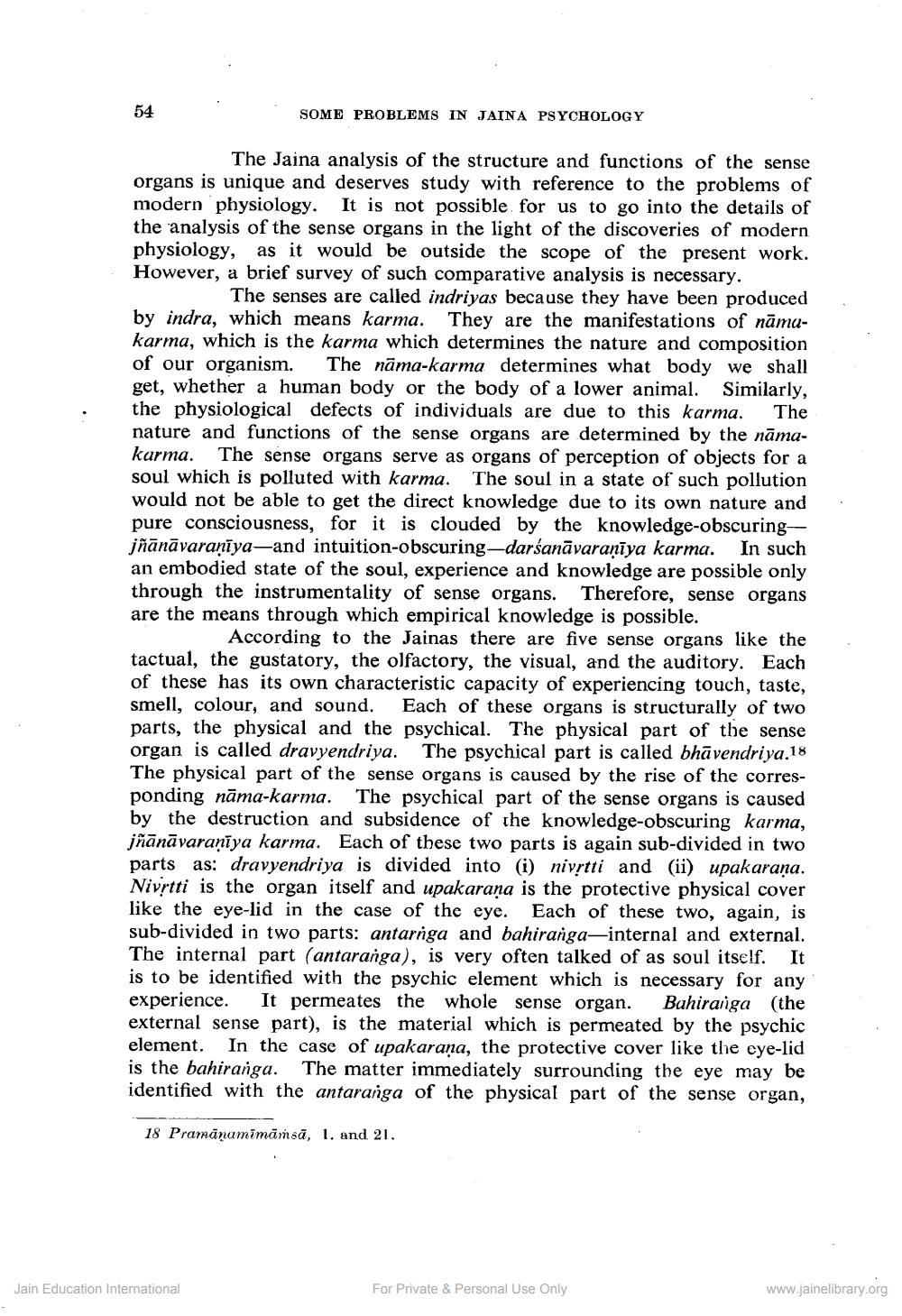________________
54
SOME PROBLEMS IN JAINA PSYCHOLOGY
The Jaina analysis of the structure and functions of the sense organs is unique and deserves study with reference to the problems of modern physiology. It is not possible for us to go into the details of the analysis of the sense organs in the light of the discoveries of modern physiology, as it would be outside the scope of the present work. However, a brief survey of such comparative analysis is necessary.
The senses are called indriyas because they have been produced by indra, which means karma. They are the manifestations of nāmukarma, which is the karma which determines the nature and composition of our organism. The nama-karma determines what body we shall get, whether a human body or the body of a lower animal. Similarly, the physiological defects of individuals are due to this karma. The nature and functions of the sense organs are determined by the nāmakarma. The sense organs serve as organs of perception of objects for a soul which is polluted with karma. The soul in a state of such pollution would not be able to get the direct knowledge due to its own nature and pure consciousness, for it is clouded by the knowledge-obscuringjñānāvaranīya—and intuition-obscuring-darśanāvaranīya karma. In such an embodied state of the soul, experience and knowledge are possible only through the instrumentality of sense organs. Therefore, sense organs are the means through which empirical knowledge is possible.
According to the Jainas there are five sense organs like the tactual, the gustatory, the olfactory, the visual, and the auditory. Each of these has its own characteristic capacity of experiencing touch, taste, smell, colour, and sound. Each of these organs is structurally of two parts, the physical and the psychical. The physical part of the sense organ is called dravyendriya. The psychical part is called bhāvendriya.18 The physical part of the sense organs is caused by the rise of the corresponding nāma-karma. The psychical part of the sense organs is caused by the destruction and subsidence of the knowledge-obscuring karma, jñānāvaranīya karma. Each of these two parts is again sub-divided in two parts as: dravyendriya is divided into (i) nivetti and (ii) upakarana. Nivetti is the organ itself and upakarana is the protective physical cover like the eye-lid in the case of the eye. Each of these two, again, is sub-divided in two parts: antarnga and bahiranga-internal and external. The internal part (antaranga), is very often talked of as soul itself. It is to be identified with the psychic element which is necessary for any experience. It permeates the whole sense organ. Bahiraiga (the external sense part), is the material which is permeated by the psychic element. In the case of upakarana, the protective cover like the eye-lid is the bahiranga. The matter immediately surrounding the eye may be identified with the antaranga of the physical part of the sense organ,
18 Pramānamīmāṁsā, 1. and 21.
Jain Education International
For Private & Personal Use Only
www.jainelibrary.org




